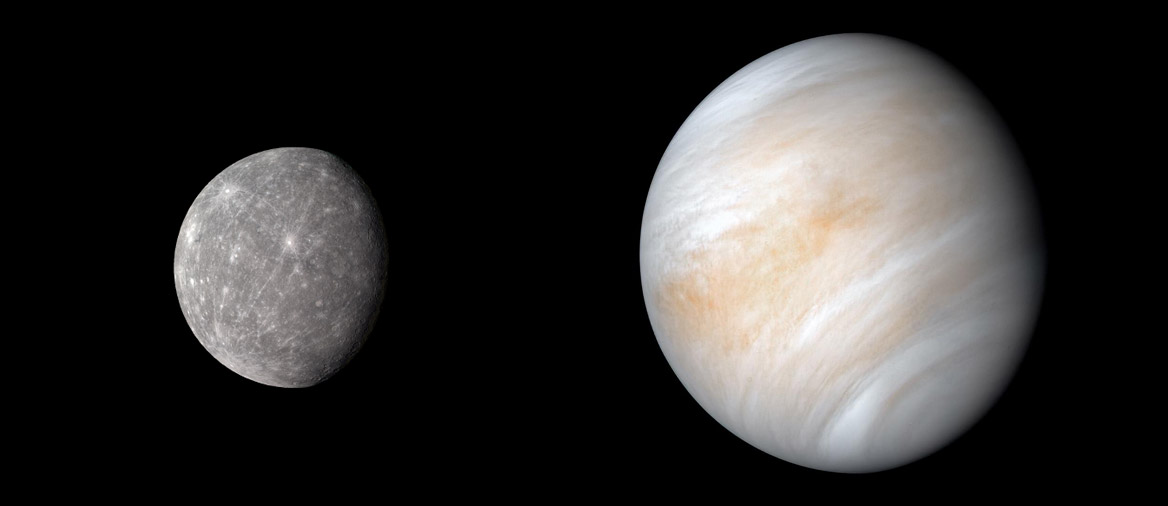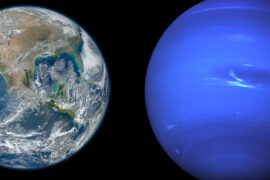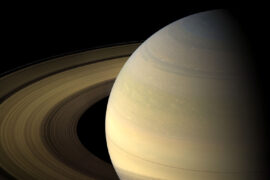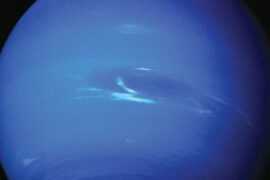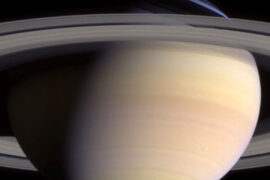Mercury and Venus are the two closest planets to the Sun in our Solar system. They formed approximately at the same time and out of the protoplanetary disc. They are both terrestrial planets and are made out of the same materials.
And yet, as they aged, they became two very different planets.
In this article, we’ll compare Mercury and Venus to find both the things they have in common and the ones where they are almost complete opposites.
Mercury vs Venus comparison.
| Mercury | Venus | |
|---|---|---|
| Position in the Solar system | 1 | 2 |
| Distance from the Sun (avg) | 58 million km | 108 million km |
| Radius | 2,440 km | 6,051 km |
| Mass | 3.3×1023 kg | 4.8675×1024 kg |
| Rotation period (1 day) | 59 days | 243 days |
| Orbit period (1 year) | 87.9 days | 224.7 days |
| Orbital speed | 47.36 km/s | 35.02 km/s |
| Surface temperature (avg) | 164 °C | 464 °C |
| Surface pressure | almost zero (< 0.5 nPa) | 9,300 kPa |
| Surface gravity | 3.7 m/s2 | 8.9 m/s2 |
| Density | 5.43 g/cm3 | 5.24 g/cm3 |
| Escape Velocity | 4.25 km/s | 10.36 km/s |
| Albedo | 0.088 | 0.689 |
| Satellites (Moons) | 0 | 0 |
| Core | rock | rock |
| Atmosphere | 42% O, 29% Na, 22% H, 6% He | 96.5% CO2, 3.5% N |
Mercury vs Venus size comparison
The following image shows the difference in size between Mercury and Venus. Venus is approximately 2.5 times bigger than Venus which in turn is only slightly smaller than Earth.
Mercury is more comparable in size to the Moon as it is only 40% bigger than our natural satellite.
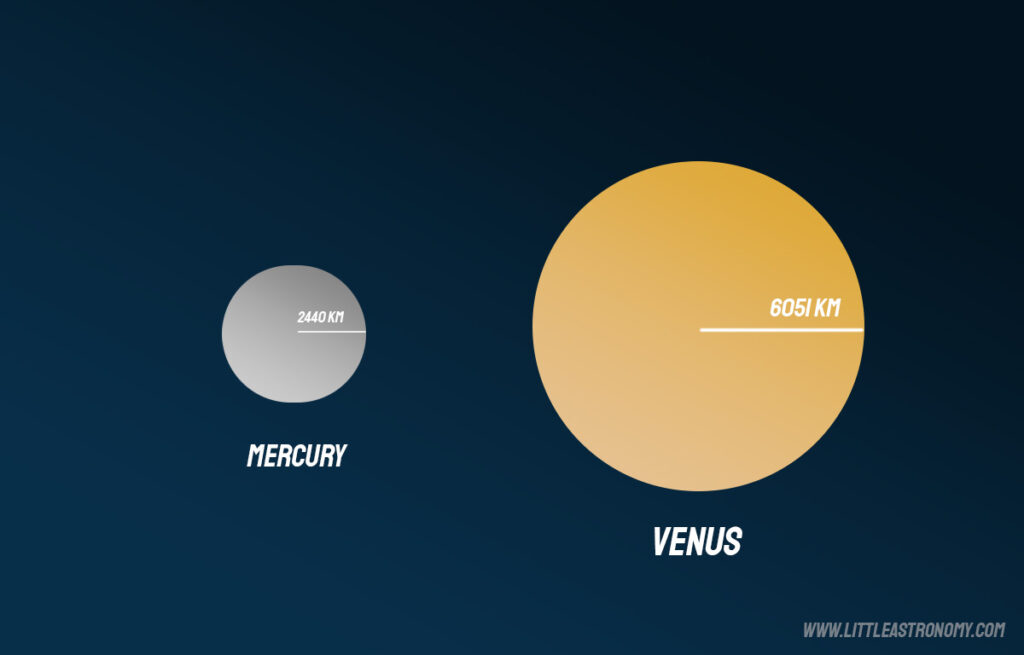
Mercury and Venus similarities
- Both planets orbit around the Sun
- Both planets formed around the same time. Approximately 4.6 billion years ago.
- The core of both planets has similar materials. These are silicate minerals, iron, and other metals.
- The surface of both planets is solid. It is because of these two last reasons they are both called “terrestrial planets”. They also share those characteristics with the Earth and Mars.
- Both planets have an atmosphere.
- The gravity of both planets is lower than Earth’s.
- The density of Mercury and Venus is very similar.
- Both planets were geologically active at some point. And recent data suggests they might still be. This means they both also had/have volcanoes.
- The two have a magnetic field and a magnetosphere.
- Both planets are out of the habitable zone of the Solar system. This means they can’t support liquid water. In fact, there’s no confirmation that either of them even has ice.
- Both planets are uninhabitable to humans.
- Neither planet has a natural satellite (moons). They are both too small and too close to the Sun to be able to have one.
- Mercury and Venus are extremely hot. They are the two hottest planets in the Solar system with mean temperatures of 333°F (167°C) and 867°F (464°C) respectively.
- Both planets rotate very slowly. It takes Mercury 176 days and Venus 243 days to complete one single rotation (one day).
- Both planets were known to ancient civilizations because they can be seen with the naked eye from Earth.
- Both planets get their names from Roman gods. Mercury is named after the messenger of the gods and god of travel and communication, while Venus is named after the goddess of beauty because of its brightness as seen from Earth.
Mercury and Venus differences
- Venus has a very thick, dense atmosphere. Mercury’s is thin and almost non-existent.
- Venus is so cloudy you can’t see its surface from space. Mercury has no clouds.
- The surface of Mercury is mostly grey. Venus is orange/red.
- Venus rotates clockwise. Mercury rotates counter-clockwise like most of the other planets in the Solar system, including Earth (the other exception is Uranus which rotates almost on its side).
- Venus is extremely hot compared to Mercury which seems counterintuitive as Mercury is closer to the Sun. This is because of the greenhouse effect caused by the Venusian atmosphere that traps all the heat on the planet. On the other hand, Mercury rotates so slowly that half of the planet doesn’t receive any heat and gets very cold.
- The core of Mercury is proportionally way bigger than Venus’. It makes up almost 42% of the planet while Venus’ core represents only about 17% of the planet.
- The surface of Mercury is extremely thin compared to Venus’ surface. It is possible the planet might have been twice as big at some point and part of its surface got stripped away by an impact in its early days.
- Venus’ magnetic field is not generated by its core. As a result, it does not protect the planet against radiation.
- Venus is very reflective because of its atmospheric composition. Mercury is not. This is why, from Earth, Venus often gets confused with a star.
- Mercury has lots of craters because it doesn’t have a thick atmosphere to protect it. Venus only has traces of big impacts because for an object to reach the surface it must be big.
- Venus is approximately 2.5 times bigger than Mercury.
- Mercury moves almost 1.5 times faster than Venus.
- Venus is almost exactly two times farther away from the Sun than Mercury.
Summary
- Mercury and Venus share many similarities like their age, a rocky core, density, and slow rotational period.
- Mercury and Venus have many differences, like their size, atmospheric composition, orbital speed, and temperature.
- Both planets share a similar origin but evolved in different ways after billions of years.

